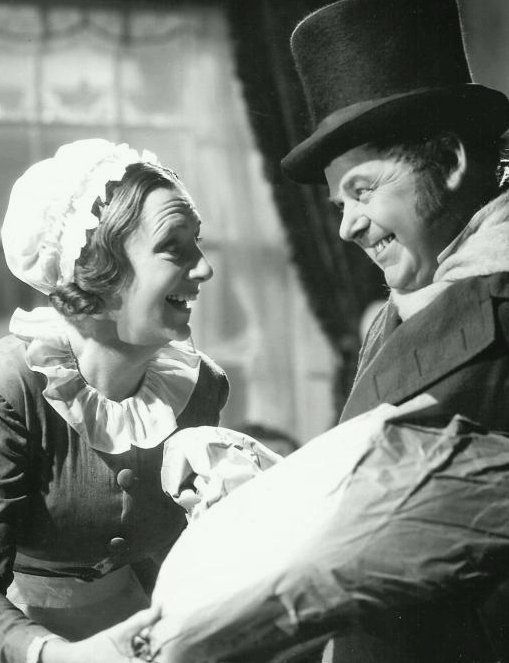By Amanda Cleary Eastep
Bob Cratchit got fired from his low-paying job on Christmas Eve. Sure, it was a miserable job–the office was freezing in the winter, the hours were long, and he had only one day off each year. Christmas Day.
And then there was his boss, Ebenezer Scrooge.
A couple of years ago, as I watched A Christmas Carol for what must have been the 30th time and subjected my children to 1938 overacting in super low-def black and white, one scene struck me that never had before.
After hearing the devastating news of his loss of employment, Bob Cratchit takes his last meager earnings and splurges them on his family’s holiday dinner. Rather than pinching the few pennies left, cursing Scrooge, and coming home a broken and dejected man, Cratchit decides to make this Christmas Eve one of abundance and joy for his wife and children.
He buys the biggest goose with all the trimmings, then joyously bursts into his simple home with his arms full of treasures wrapped in brown paper.

You can make out the shapes of the fresh bird and other shopping list items. But like the ghosts of blessings past, their plain wrappings seem to turn them into symbols of the loss and sorrow this man silently carries in his heart.

The day before that Christmas Eve a few years ago, I received a call from a bill collector. I’m a stickler for timely payments, but with all the medical bills that had accrued over that year, I had apparently missed one. I sat on the edge of my bed, paperwork spread out in front of me, and cried.
OK, so it’s not like I would be carted off to the workhouse and my kids would be praying for lumps of coal in their stockings to keep them warm on Christmas morning. Just sometimes, one of those things we carry adds too much weight to the pile already in our arms.
See there? You can make out the shape of the umpteenth car repair, the yet-to-be-diagnosed symptoms, and the rebellious child.
But the things Cratchit carried–the things we carry–aren’t all pain and loss. Those items he holds in his tired arms are also symbols of something else.
What he brings into his home that Christmas Eve night, into the new year, and into the unknown are hope and an attitude of thankfulness for that moment of plenty, despite what appears to be the promise of scarcity.
Hope came to us in similar wrappings on the first Christmas–a baby in swaddling clothes laid in a feeding trough…a symbol of our greatest hope and one we can carry into the new year. Into the job loss, into the broken family.
As I sat on my comfy bed in my safe warm house, I temporarily focused on my burdens rather than the abundance. I focused on the swaddling instead of the star shine, on the lowly manger instead of the angel song.
Why do we let go of hope so easily? How many times do we have to come out of suffering to realize Scrooge is not the one in control, that pain and loss and trial are not our masters?
Apparently, again and again. But that’s what’s lovely about this time of year.
We might not be able to decide what we carry, but we can decide how we carry it and Who we turn to with both our needs and our thanks.
We can choose to go into the new year being Bob Cratchit.
On a side note: This same scene is repeated near the end of the movie, but this time, it is Scrooge who enters the house with his arms full of plainly wrapped packages and a radically changed heart.

This post first appeared at amandaclearyeastep.com.
Feature photo: by Mantas Hesthaven on Unsplash




